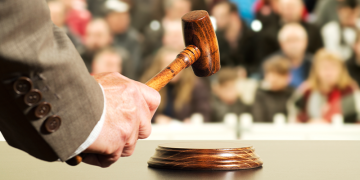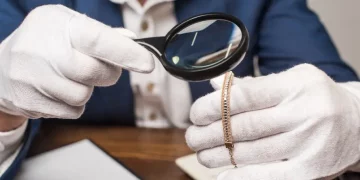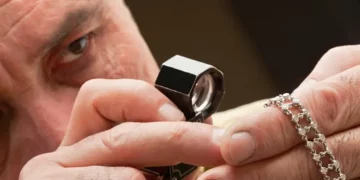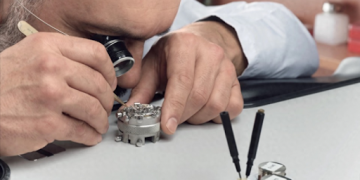1. Introduction: Recognizing Signs of Fraud or Misrepresentation in Auctions
Auctions, whether in person or online, offer collectors and investors a unique opportunity to acquire rare and valuable items. However, with the excitement of bidding comes the potential risk of overpaying for items that may not be as valuable or authentic as they initially appear. As a first-time or seasoned bidder, knowing how to spot potential red flags can save you from costly mistakes, misrepresentation, and fraudulent practices.
Auctions operate on a different dynamic compared to traditional retail buying and selling, which means there are distinct challenges to face when participating in these fast-paced environments. While the majority of auction houses and sellers are legitimate, it’s essential to approach the process with caution. Whether you’re bidding on rare art, vintage collectibles, fine jewelry, or even sports memorabilia, being able to identify potential red flags is vital to ensuring that you’re making a smart purchase.
In this article, we’ll explore the most common warning signs that could indicate problems with a lot at auction. We’ll also provide guidance on how to avoid overpaying, ensuring that you protect yourself from any unpleasant surprises when the gavel comes down.
2. Authentication Concerns: Ensuring the Legitimacy of the Item You’re Bidding On
One of the most significant risks in auction bidding is purchasing an item that isn’t as authentic as it appears. While reputable auction houses have stringent vetting processes in place, there are still occasions where items might not meet the advertised standards of authenticity. Here are the key red flags to look out for when determining whether an item is authentic:
- Lack of Provenance: Provenance refers to the documented history of ownership of an item, and it’s particularly important for rare and valuable pieces such as art, antiques, and collectibles. If the auction house or seller can’t provide detailed provenance or has limited information, that should raise a red flag. Provenance helps establish the legitimacy and value of an item, particularly for works of art and antiques. Without it, you may be at risk of purchasing a fake or misrepresented piece.
- Absence of Expert Authentication: Many high-value items, such as fine art or rare collectibles, should come with certificates of authenticity or expert appraisals. If no such documentation is provided or available upon request, the legitimacy of the item could be questioned. Always ask for authentication documentation, such as certificates from reputable experts or authorities in the field, especially for high-ticket items.
- Inconsistent or Dubious Descriptions: Auction descriptions should be clear, accurate, and detailed. If the auction house’s description of the item is vague, contradictory, or raises doubts about its authenticity, this could be a sign of trouble. Be wary if the listing uses ambiguous language like “possibly,” “likely,” or “appears to be.” A reputable auction house should provide clear and trustworthy information regarding the authenticity of the item.
- Too Good to Be True: If the price seems too good to be true, it probably is. Authentic, rare items, especially those from well-known artists or historical periods, often have high-value price tags. If you see a seemingly rare item being auctioned for a fraction of its usual price, be suspicious and conduct thorough research before bidding.
To avoid authenticity issues, always perform your due diligence. If you’re unsure about an item’s legitimacy, consider hiring a third-party expert to review the lot before you place your bid.
3. Hidden Costs: How to Avoid Unexpected Fees and Additional Costs
A common mistake bidders make is not factoring in additional costs that can significantly increase the final price of an item. Auctions often involve fees that are added on top of the hammer price, and these costs can sometimes be substantial. Here’s how to recognize hidden costs and avoid unexpected financial surprises:
- Buyer’s Premium: The buyer’s premium is an extra fee added to the winning bid at an auction. This fee typically ranges from 5% to 20%, depending on the auction house. Be sure to account for the buyer’s premium when calculating how much you’re willing to spend. It’s important to know what the premium rate is in advance so that you’re not blindsided by the final price.
- Shipping and Handling Costs: When purchasing items at an auction, especially online auctions, you may be responsible for shipping and handling fees. These costs can quickly add up, especially for large or fragile items that require special packaging or insurance. Always ask for an estimate of shipping costs before placing a bid, and factor these expenses into your budget.
- Taxes and Import Fees: Depending on the location of the auction and the item you’re purchasing, you may be subject to sales tax or import duties. Sales tax can be a significant additional cost, especially for high-value items. If you’re bidding on an item internationally, you should also be aware of any potential import fees or customs duties that may apply when the item arrives in your country.
- Restoration or Maintenance Fees: In some cases, items purchased at auction may require restoration or maintenance work. For example, vintage furniture or antique art may need to be professionally restored before it can be displayed or used. Consider whether the auction house or seller offers any information on the condition of the item, and factor in any potential costs for restoration or conservation.
Before you start bidding, it’s crucial to inquire about all potential additional fees that may apply. Read the auction house’s terms and conditions carefully and ask questions if you’re unsure about any of the costs involved. Properly understanding the full financial picture will help you make informed decisions about your bids and avoid being surprised by hidden fees.
4. Overvalued Lots: Identifying Items That May Not Be Worth Their Asking Price
Overpaying for a lot is a common risk in auction bidding, particularly for new bidders who may not fully understand the market value of an item. Auctions can be emotional experiences, and competitive bidding may drive up prices quickly. Here are some key warning signs that an item may be overvalued or priced higher than it is worth:
- Lack of Comparable Sales: When evaluating an item, it’s important to compare it to similar items that have been sold in the market. If you can’t find similar items that have been sold recently or if the item seems to be priced significantly higher than comparable pieces, it could indicate that the lot is overpriced. Auction houses may inflate the value of rare items, but the market will ultimately determine the true worth. Researching auction results for similar items can give you a more accurate sense of the item’s fair value.
- Overly Aggressive Bidding: Sometimes, the auction atmosphere can encourage bidders to get caught up in the excitement and bid beyond the fair market value of the item. If a lot is receiving unusually high bids early in the auction, it could be a sign that competition is driving up the price artificially. Watch the bidding patterns carefully, and if the price seems to be inflating too quickly, consider stepping back and reevaluating the item.
- Flawed or Deteriorated Items: If the item in question has noticeable flaws, such as significant wear, damage, or repairs, it may not be worth the asking price. A reputable auction house will usually provide a detailed condition report, so pay close attention to any imperfections listed. Even if an item is rare or valuable, its condition will heavily influence its final value.
- Overhyped or Trendy Items: Be cautious of items that are being hyped as “the next big thing” or are part of a current trend. Trends come and go, and what may seem valuable today might lose its luster tomorrow. While you might be tempted to jump on the bandwagon, it’s essential to assess whether the item has long-term value or is merely a fleeting trend.
To avoid overvalued lots, take the time to thoroughly research the item’s market history, condition, and comparable sales. Additionally, consider the broader market trends and whether the item’s price is reflective of its true value.
5. Conclusion: How to Protect Yourself and Avoid Costly Mistakes at Auctions
Auctions can be exciting and offer opportunities to acquire rare, valuable items, but they also come with risks. By learning to spot auction red flags, you can protect yourself from costly mistakes and avoid overpaying for misrepresented or inflated lots. Here are a few strategies to ensure a smooth auction experience:
- Do Your Research: Always research the items you’re interested in, including their market value, authenticity, and condition. Familiarize yourself with auction terms and understand the fees involved, such as buyer’s premiums and shipping costs.
- Verify Authenticity: Make sure the item is authentic by requesting certificates of authenticity, provenance details, and expert appraisals. If you’re unsure, seek expert advice before placing a bid.
- Watch Out for Overvalued Lots: Don’t get swept up in the excitement of the auction. Stick to your budget and avoid overpaying for items that may not hold their value over time.
- Ask Questions: If you’re ever unsure about an item or its condition, ask the auction house or seller for more information. A reputable auction house should be transparent and responsive to your inquiries.
By staying vigilant and following these tips, you can protect yourself from potential pitfalls and make informed decisions during the auction process. The key to successful bidding lies in preparation, knowledge, and a keen eye for spotting potential red flags.






